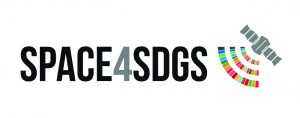الملاحظات التقييمية الرسمية على الحوارات إلى قمة الأمم المتحدة للنظم الغذائية لعام 2021
نوع الحوار
بدعوة من
لغة فعالية الحوار
التاريخ/الوقت
إلى:
المدينة
نطاق التركيز الجغرافي
التنسيق
يُرجى مراجعة التفاصيل أدناه للحصول على معلومات التسجيل إذا كانت متوفرة أو الاتصال بمنظم الحوار إذا كنت ترغب في الحضور.
القيّم
الوصف
Space applications are key tools for a sustainable agriculture and for food security including production, processing and transport chains. Earth observation data and meteorology support analyses and decision-making processes for food and water security, as well as resilience to crisis. Other space technologies and applications also contribute significantly to efforts to improve food systems worldwide. Farmers use satellite-based geolocation for precision agriculture, for example to optimise spraying of fertilisers on fields or to track assets such as equipment, livestock and products. Satellite communications make it possible to link data from food producers in remote areas to distribution centres and consumers; it also enables communities to resume activities after a natural disaster impacted other communication systems.
The 2021 UN/Austria Symposium “Space Applications for Food Systems” will bring together academia, scientists, entrepreneurs and many others to discuss and demonstrate how space data and applications support food systems. The event will include an Independent Dialogue of the Food Systems Summit on Thursday 9 September a.m.
Detailed information on the Symposium and the registration form are available at https://www.unoosa.org/oosa/en/ourwork/psa/schedule/2021/2021Graz.html
The purpose of the Dialogue is to enable members of the audience representing various types of stakeholders (farmers, food processing, scientists, providers of technical solutions, policy-makers, etc.) to discuss in small groups how space applications could help solve current issues of food systems stakeholders and contribute to transform the way food is produced and transported.
The Dialogue will consist of five groups discussing simultaneously:
Group 1 Raising awareness
Group 2 User requirements
Group 3 Financing for development
Group 4 Technology transfer
Group 5 Youth engagement
Each Dialogue group will discuss for 60 to 90 minutes, in a moderated discussion, then present their conclusions and recommendations to all in the Plenary.


